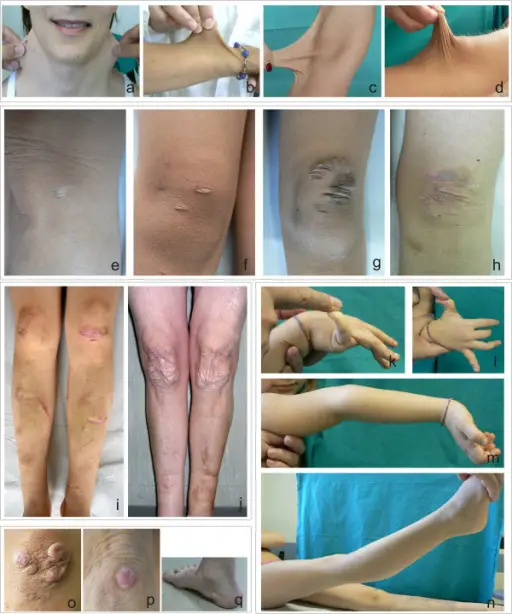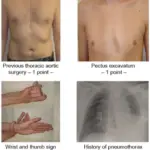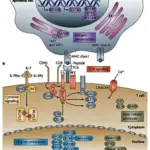Ehlers-Danlos syndrome is a group of inherited connective tissue disorders caused by abnormalities in the structure, production, and/or processing of collagen.
What is the Pathology of Ehlers-Danlos Syndrome?
The pathology of Ehlers-Danlos syndrome is:
-Etiology: The cause of Ehlers-Danlos syndrome is mutations in a variety of genes, that may lead to abnormalities in the structure, production, and/or processing of collagen.
-Genes involved: Genes including COL5A1, COL5A2, COL1A1, COL3A1, TNXB, PLOD1, COL1A2, FKBP14 and ADAMTS2.
-Pathogenesis: The sequence of events that lead to Ehlers-Danlos syndrome are mutations in variety of genes leading to change the structure, production, and/or processing of collagen, or proteins that interact with collagen. A defect in collagen can weaken connective tissues in the skin, bones, blood vessels, and organs, resulting in the signs and symptoms of EDS.
How does Ehlers-Danlos Syndrome Present?
Patients with Ehlers-Danlos syndrome typically affects either male or female, present at birth or in early childhood. The symptoms, features, and clinical findings associated with Ehlers-Danlos syndrome include loose joints, joint pain, stretchy velvety skin, and abnormal scar formation. Complications may include aortic dissection, joint dislocations, scoliosis, chronic pain, or early osteoarthritis.
How is Ehlers-Danlos Syndrome Diagnosed?
Ehlers-Danlos syndrome is diagnosed by medical history and clinical observation. The Beighton criteria are used to assess the degree of joint hypermobility. Diagnostic tests include collagen gene-variant testing, collagen typing via skin biopsy, echocardiogram, and lysyl hydroxylase or oxidase activity.
How is Ehlers-Danlos Syndrome Treated?
Ehlers-Danlos syndrome is treated with supportive treatment.
What is the Prognosis of Ehlers-Danlos Syndrome?
The prognosis of Ehlers-Danlos syndrome is dependent on the specific type of EDS they have.



